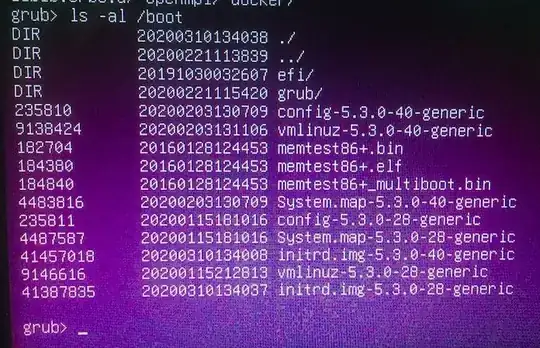I have tried using grub to boot into the filesystem but with no success. I don't want to reinstall the OS using external media. Help me out to recover this issue. Do check the screenshot of the error in the below link image.
I am using Ubuntu 18.04 LTS as the only OS in my HP pavilion g6 with an intel i5 processor and 8GB ram.

I have tried 'e' options before booting into the system and changing the Linux command line by removing 'quiet splash' with 'nomodeset'. I have followed most of the solutions but without success.
I have tried to boot from grub using the following steps with failure and facing the same error. The commands below vary a bit as per my system -
grub> set root=(hd0,1)
grub> linux /boot/vmlinuz-3.13.0-29-generic root=/dev/sda1
grub> initrd /boot/initrd.img-3.13.0-29-generic
grub> boot
The problem occurred when I was not able to start vbox as virtualization was disabled in the BIOS, so I rebooted the system to enable virtualization in BIOS and again after rebooting the machine, I am facing this issue.
Right now, I am only able to access the grub command-line interface and advanced boot options in Linux with 'c' and 'e' options.
UPDATE 1: I disabled virtualization but it did not resolve the issue. I am also unable to locate the file zz-resume-auto using the locate command. Grub does not recognize this command. I also tried to do that using search.file zz-resume-auto but without success. I am not too familiar with the grub command-line interface. Do help me out with the command to search for the file.
The output of ls -al /boot :-
UPDATE 2: I am also unable to boot into the last kernel version. I am attaching the link for further information. I tried to troubleshoot this issue using boot-repair, but without any luck. Kindly check out the boot-repair report at - http://paste.ubuntu.com/p/F2kbMT6nd5/
Thank you.
